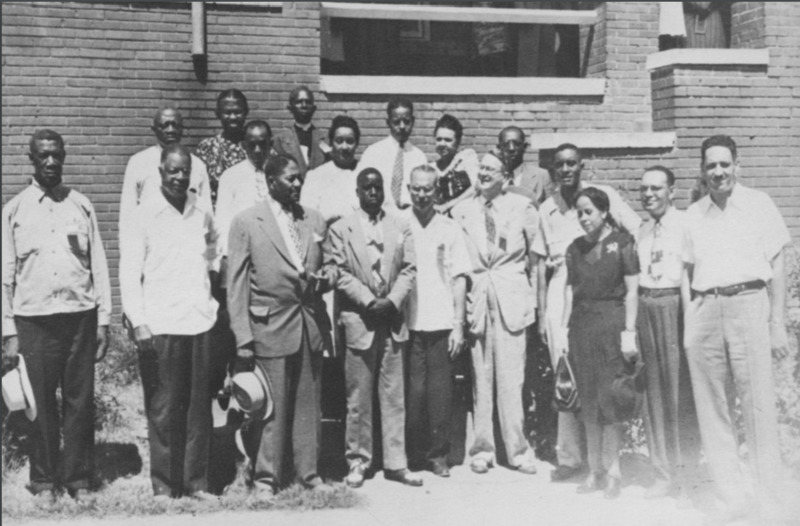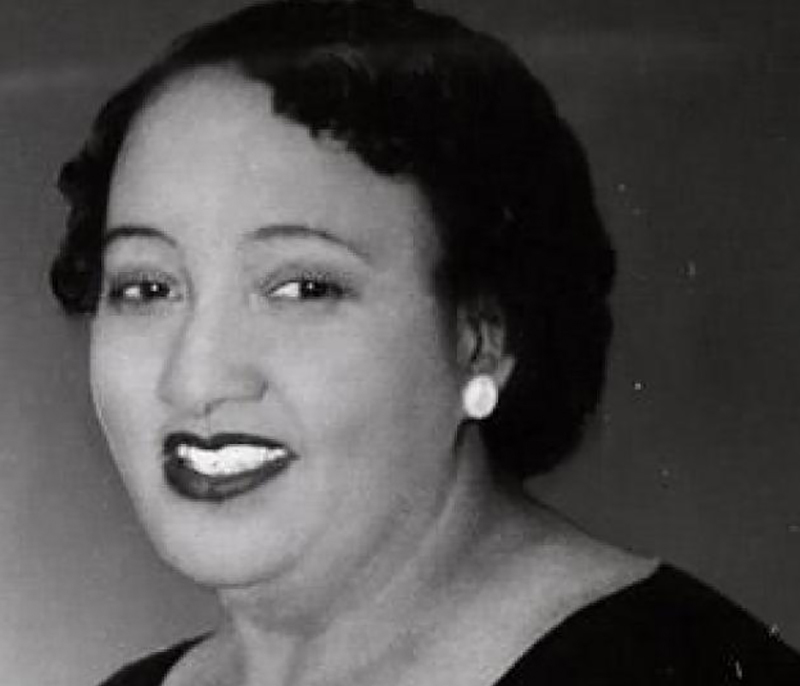When considering the prestige that the Houston Chapter of the National Association for the Advancement of Colored People (NAACP) gained in the 1930s through the 1950s, one must be aware of the determined leadership of Lulu Belle White. Born in 1900 and a product of Prarie View College, Lulu B. White began her career with the NAACP shortly after graduating from college and marrying her husband, Julius White.
Trading in her role as a school teacher in the outskirts of Houston, White became the Director of Youth Council for the NAACP Houston Chapter in 1937. In this role, she worked with key leaders at the local, state, and national levels to strengthen interests in the NAACP. Through her work, White created and advocated for new chapters not only in Houston but all over the state of Texas.
After the death of the NAACP Houston Chapter President, Clifton Frederick Richardson, in 1939, Lulu B. White assumed the role. White brought the organization to new heights. She worked diligently and preserved to not only keep the chapter running, but to maximize all of its efforts. White’s work towards fighting Jim Crow laws and advocating for voting rights began on this local level. As a powerhouse in the Houston chapter, White did not let many things slide. She was quick and bold. She was a challenger of people and of the system itself. This demeanor gave White a reputation that ultimately led to even more involvement in the NAACP.
In 1943, Lulu B. White became the Executive Secretary of the Houston Chapter of the National Association of the Advancement of Colored People. Under White’s leadership in this position, the Houston Chapter became the second-largest chapter in the nation. Membership grew from 2,000 members to 10,000. During this period, World War II had just broken out and like the rest of the nation, the racial climate in Houston was tense. White’s role as the Executive Secretary was met with a long to-do list such as tackling many issues including grievances of discrimination in the Houston shipyard and assisting in the aftermath of bringing justice to some riots in Beaumont. Although Beaumont in the physical space that White was elected to serve, she wholeheartedly put her efforts into helping the nearby chapter build itself up and advocate for people affected by riots that broke out in the area.
However, Perhaps White’s most notable achievement in her position as the Executive Secretary of the Houston Chapter of the NAACP was her role in the 1944 Supreme Court case, Smith vs. Allwright. In this historical case, the Supreme Court abolished state laws that allowed the Texas Democratic Party to require that all voters in the primary elections be white. Leading up to the verdict, Lulu B. White spread awareness throughout the city on topics like paying poll taxes and other key pieces of knowledge required to vote. As the decision came in, Lulu B. White used her platform to notify people all over the country that the black vote was impactful and should be celebrated. Voting rights were a major component in much of Lulu B. White’s work, and this was just one example of the influence and interference she had on voting rights for African Americans during the 1930s and 1940s.
As a black woman in the 1940s, Lulu B. White combatted both critiques of her race and her gender. Using her reputation as a powerful commander, White formed powerful alliances with leaders around the nation. This included people like Daisy Lampkin, the first woman elected to the NAACP’s national board. Relationships like this meant that Lulu B. White’s opinions were valuable at all levels of the NAACP. Through her perception and her relationships with others, Lulu B. White gained the respect of black and white people alike and used her platforms to advocate even more for equal rights. The respect she earned caused many others to seek advice and support from White, which she was eager to provide. This advice ranged from knowledge on topics such as fundraising to support as people were applying for schools, jobs, and leadership positions.
However, Lulu B. White’s reputation and role in the NAACP came into question when charges against White that she had ties to the Communist party. This was partly due to her public support of Henry A. Wallace, a 1948 presidential candidate, as well as some beliefs she held. Like many others being accused at the time, White fought for equality through demonstrations that others sometimes deemed as extreme. While she believed that African Americans should have equal access to all areas of life and she stood adamantly by those beliefs. In the end, these accusations ultimately followed Lulu B. White even after she left her position as executive director of the NAACP Houston branch.
In 1949, Lulu B. White became a fieldworker in the national office of the NAACP. A notable achievement during this time was her role in the Supreme Court case, Sweatt vs. Painter. The case began in 1946 when Heman Marion Sweatt applied and was rejected from the University of Texas Law School because of his race, Sweatt sued the state court. Lulu B. White’s constant advocacy against “separate but equal entities” came into play. It was White’s firm belief that African Americans would continue to lack resources and be underserved as long as they were separated. Throughout the case, White maintained this belief and spoke out against anyone else that opposed it. Ultimately, a unanimous decision was made by the Supreme Court in 1950 to admit Sweatt into the UT Law School. While this did not end segregation completely, it was a huge stepping stone and Lulu B. White played an important part in the making of that decision.
In 1955, Lulu B. White began to focus more on the Houston Chapter of the NAACP. Shortly after the establishment of the Lulu White Freedom Fund by the National NAACP in 1957, Lulu B. White passed away after possibly battling heart disease. She was buried in Houston, Texas.
Images


